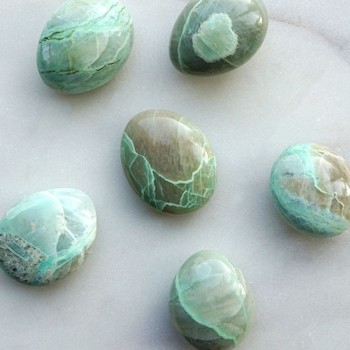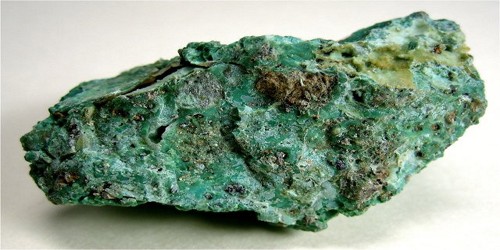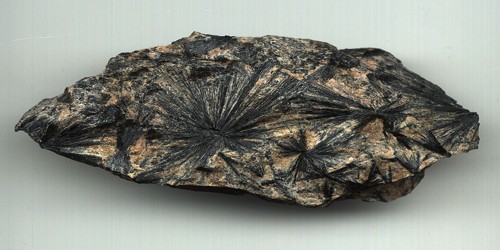Garnierite is a general name for a green nickel ore which is found in pockets and veins within weathered and serpentinized ultramafic rocks. It is a bright green amorphous mineral consisting of a hydrated silicate of nickel and magnesium. It forms by lateritic weathering of ultramafic rocks and occurs in many nickel laterite deposits in the world.
Garnierite is named Jules Garnier who first discovered it 1864 in New Caledonia. It is a generic name for a green nickel ore which has formed as a result of lateritic weathering of ultramafic rocks. It can be used for carvings and ornamental objects.

Fig: Garnierite ornamental objects
Properties
Garnierite is a fine-grained mineral with poor crystalline structure. It is a green mineral, ranging from light yellow-green to dark green. The color comes from the presence of nickel in the mineral structure for magnesium. It commonly has a colloform texture, typical of minerals that fill open spaces from a solution. The Specific gravity of garnierite ranges from approximately 2.5 to 3.
Occurrence
Light colored garnierite is an alteration of olivine-rich rock to a clay-like mineral poor in nickel, light green to bright green garnierite is a result of the leaching of manganese oxide, magnesium, nickel, and iron from the original dark green garnierite, rich in nickel, which was deposited by groundwater.
It is an important nickel ore, having a large weight percent NiO. Some of the proposed compositions are all hydrous Ni-Mg silicates, a general name for the Ni-Mg hydrosilicates which usually occur as an intimate mixture and commonly includes two or more of the following minerals: serpentine, talc, sepiolite, smectite, or chlorite, and Ni-Mg silicates, with or without alumina, that have x-ray diffraction patterns typical of serpentine, talc, sepiolite, chlorite, vermiculite or some mixture of them all.
Information Source:
















